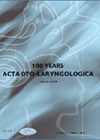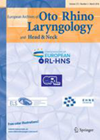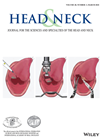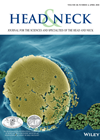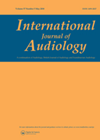
Journal Reviews archive for 2018
What to do with incidental findings on FDG PET/CT?
18F-fluoro-deoxy-glucose positron emission tomography/computed tomography (FDG PET/CT) is commonly used in head and neck cancer staging. This investigation frequently identifies incidental findings unrelated to the index head and neck cancer. To assess the nature of these incidental findings, notes of...
Balloon compared to FESS – long-term patient satisfaction
Balloon compared to FESS – long-term patient satisfaction This paper is the first controlled study of balloon sinoplasty’s long-term efficacy, with a follow-up extending over five years. There were 208 patients analysed and 88 recruited. Exclusions were nasal polyps grade...
Puberty and rhinitis
While asthma and rhinitis are more common in boys compared to girls in childhood, whether this trend persists after puberty or not is not yet clear. Authors inspected the European Commission funded MeDALL (Mechanisms of the Development of ALLergy) to...
Inspiratory peak flow and tracheostomy
The evaluation of the degree of laryngeal obstruction to indicate a tracheostomy has always been a subjective decision. The authors correlated the visual laryngeal obstruction by flexible nasolaryngoscopy and the peak inspiratory flow using a pocket peak inspiratory flowmeter. Twenty-two...
Should all patients with BPPV have an MRI?
This paper describes an interesting series of 500 patients over a 10-year period with posterior canal BPPV, who had been investigated with MRI. The female to male ratio was 1.6:1 with a mean age of 56. There was a right...
Synchronous bilateral tonsil cancer
There is a long-standing debate regarding either unilateral or bilateral tonsillectomy for histological confirmation of tonsil cancer. Bilateral tonsillectomy is the standard of care in Denmark for proven or suspected tonsil carcinoma, and in the diagnostic work-up of the unknown...
Can laryngeal sensitivity testing predict aspiration and pneumonia in dysphagic patients?
The laryngeal adductor reflex (LAR) is characterised by brief vocal cord closure in response to laryngeal stimulation. It is important in swallowing physiology as it represents a mechanism for airway protection. The authors of this study examined whether the absence...
Useful algorithm to manage adults with branchial cysts
Managing a solitary cystic lateral neck mass, specifically differentiating between a simple second branchial cyst and a metastatic cyst poses a challenge. Often the diagnosis only becomes apparent on the final histology. This paper analysed 28 adults that presented to...
Impact of the updated cancer staging system on HPV-positive disease
The AJCC cancer staging manual was updated in 2017 (8th edition). It is used in the MDT setting for planning treatment and assessing prognosis for individual patients, and is also widely used internationally in clinical trials. Unlike previous iterations of...
The rise of AI in the head and neck clinic
There has been a huge focus in recent months on the rise of artificial intelligence (AI) in all aspects of modern life, and the head and neck clinic is no exception it appears. This paper builds on previous work to...
Method of delivery: all topical nasal corticosteroids are not made equal
There is an increasing body of evidence that the role of surgery for chronic rhinosinusitis is to facilitate the delivery of topical medical treatment – most notably, topical corticosteroids. Two recent studies, one using flow dynamics and another one examining...
Maturation of BC attenuation
The aim of this study was to clarify the reason for differences between bone-conduction hearing in adults and infants. The authors investigated how the sound pressure level in the ear canal changes depending on the bone-conduction transducer placement. By using...


